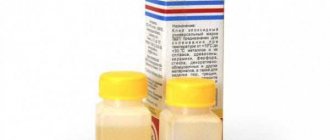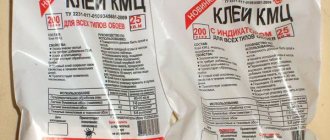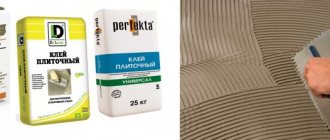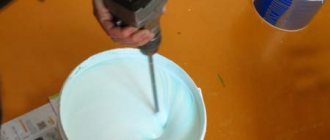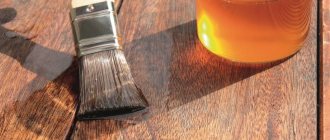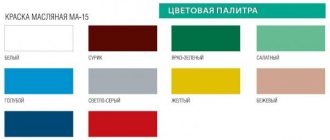Epoxy resin is an oligomeric synthetic compound that is widely used to create paints, adhesives, and beautiful and highly durable household products. A hardener for epoxy resin helps the substance obtain its final properties because it starts the polymerization process.
What is it for? The type of curing of epoxy resin will be very different from the same indicator for paint and varnish materials. If primer mixtures, paints, and adhesives harden only after the liquid evaporates, then the resin can be cured only after adding a special solution. For this reason, resin is often called a two-component material.
A hardener is a chemical liquid substance, an accelerator of a chemical reaction and its full participant. Once the resin and hardener are combined, polymerization begins, resulting in a solid (i.e., stable) composition.
Hardener functions
The type of curing of epoxy is very different from that of other coatings. If paints, primers, and adhesives harden after the liquid evaporates, the resin can be cured only after adding a special solution. That's why epoxy is called two-component.
A hardener is a liquid chemical substance, a catalyst (accelerator) of a chemical reaction and its full participant. After combining the resin and hardener, the polymerization process begins, as a result the composition acquires a stable (solid) state.
It is important to add strictly established proportions of both components of the mixture. The accuracy of the ratio of funds determines the following properties of the final material:
- hardening time;
- transparency;
- durability;
- hardness;
- homogeneity.
Why is the correct chemical composition of the mass so important? If the proportions are violated, the quality characteristics of the mixture will decrease, as will the service life of the finished compound. Correct dilution will allow you to obtain a high-quality thermosetting composition that will have the following characteristics:
- high adhesion with most known materials;
- excellent water resistance, tensile strength, fracture, mechanical damage and chemical action;
- dielectric qualities;
- non-shrinking form or slight shrinkage during operation.
Alternative options
There are other compounds that can replace epoxy release wax as good alternatives. Among them:
- Release agent VS-M. A composition of silicones and wax, mixed as an emulsion in a mixture of solvents. Anti-adhesive coating for molds. Designed for castings at silicone-silicone and silicone-mold boundaries, but can also be successfully used for low-temperature processes associated with epoxy castings. Release form: aerosol cans.
- Paraffin. Being a product of hydrocarbon processing (a by-product of fuel production), paraffin can react with polymerizing epoxy at a sufficiently high process temperature. Therefore, as a separator (like wax), paraffin can only be used in low-temperature gelatinization and resin curing reactions.
- Stearin. It is obtained from stearic acids released during soap making or similar production processes, separating the liquid fraction in vegetable and animal fats (olein) and the solid fraction (stearin). Chemically inert towards epoxy materials, with a high degree of refractoriness (this is why stearin candles, unlike paraffin candles, do not flow when burning). But this is also an obstacle when used as separators - it is difficult to apply to complex shapes when casting them.
Choose a separator based on suitable properties so that the pouring goes well, as does the separation of the product from the mold.
Classification of hardeners
All hardeners are divided into two types according to their chemical group:
- Amine. These include amines, polyamines and diamines, including polyethylene polyamine, hexamethylenediamine. These hardeners are the most common among craftsmen; they can be used to dilute any resin. Once added, the epoxy will harden even at room temperature. This type of curing is called cold curing.
- Acidic. Carboxylic acids and their anhydrides are used - maleic, phthalic, hexahydrophthalic and others. Acid hardeners give a more reliable result, but are difficult to use. This type of curing is called hot, and during exposure to temperature (100–200 degrees), the epoxy improves its physical and chemical properties.
At home, it is recommended to use only amine solutions, although with sufficient experience and dexterity, epoxy resin can also be cured using acids.
Three replacement factors
It is impossible to find a complete replacement for epoxy resin. You have to sacrifice either hardness, which is unrivaled here, or durability. For example, a material such as polyester resin is not much inferior to epoxy; it is a worthy analogue. The most common example of replacement is in everyday life, during home repair or design work, and in construction. Moreover, these two areas closely intersect.
The most common example of such a replacement that is given is the pouring of floors. Externally, immediately after completion of the work, the two types of these coatings, epoxy and polyester, are generally indistinguishable; the difference will appear later, as the external gloss is scratched and worn (epoxy will still be stronger than its alternative). Three circumstances usually force such a replacement:
- Allergy to epoxy base or hardeners. In these cases, protective measures such as respirators, thick clothing, goggles and gloves are first tried. Then they try to change the brand of resin or hardener, or both of these components, and if all else fails, they look for an alternative.
- The need to restore broken or broken into large fragments of dishes that are used for cooking or eating - epoxy in this regard, although moderately, is slightly toxic.
- Cost of epoxy. For large works, its purchase results in a decent amount. Cheap compounds can sometimes be found with similar functionality. Although inexpensive, this is a relative term.
Traditional hardeners (PEPA, TETA, DTB-2)
Hardeners have a huge impact on the resin, so you shouldn’t skimp on their quality. It is better to buy a product made according to the standard and recommended by the manufacturer for a specific type of epoxy. Hardeners are traditional and modified (modern). The most inexpensive PEPA and TETA, which are produced by many companies, are quite cheap, easy to use, but inferior in quality to expensive modified products.
PEPA or polyethylene polyamine (part of EDA, EDP glue, a number of primers and enamels) is a very popular material. It’s easy to work with; it doesn’t even require strict adherence to technology. Can be used at room temperature.
In appearance, PEPA is a viscous brown liquid, so where it is important to preserve a transparent material, the use of a hardener will not be possible. Up to 75% of the product consists of uncontrolled impurities, and only 25% of the product reacts with the resin. This is the reason that PEPA cannot be used for products in contact with food and water.
TETA or triethylenetetramine is a clear liquid with a pungent odor, imported. It is a better replacement for the previous product. The product description indicates that impurities are no more than 4%, but the composition contains fewer tertiary amino groups. This reduces the ability to polymerize at room temperature, and post-curing is best done at elevated temperatures. Strict adherence to technique and proportions when working with TETA is mandatory. The advantages include:
- high strength;
- uniformity and transparency;
- chemical purity.
Hardener DTB-2 is a mixture of amino esters of complex composition, non-viscous, yellow-colored liquid. Allows you to dilute epoxy at room temperature. Technical characteristics of the finished product:
- high impact resistance;
- moisture resistance;
- low abrasion;
- excellent gloss.
DBT-2 mixed with epoxy is used to prepare casting compounds, self-leveling floors, and mixtures for the restoration of bathtubs.
conclusions
Epoxy resin is a unique and versatile product. This substance is becoming indispensable in numerous modern industries. It is also actively used by home craftsmen in creative workshops. But epoxy cannot work without a hardener. The additional substance activates the polymerization processes, only with its help the resin demonstrates all its declared qualities. Therefore, it is very important to understand and know all the available types of hardeners and be able to select them for working with epoxy.
Modern compositions
What can replace the described means? Modified hardeners lack most of the disadvantages of traditional ones, but their price is much higher. Finished products will have higher strength properties, since the resin polymerizes more completely. The products act as plasticizers - in some cases they can dilute and plasticize epoxy.
M-4
Hardener M 4 is an amine hardener of a modified type, a liquid with high viscosity, color red-brown. M4 must be mixed with epoxy resin in a volume of 20 - 25% of the base material. The substance is capable of curing epoxy even at a temperature of +2...+5 degrees - this will not interfere with obtaining a product of increased strength.
The rapid curing agent is made on the basis of PEPA and has been improved in composition and properties. In addition to cold curing, if necessary, you can do hot polymerization with M4. The plasticization and gelatinization time at room temperature will be 30–50 minutes, and will increase at lower temperatures.
Hardener 921
The 921 series sells several types of hardeners - 921, 921 OP, 921 T. These are low-viscosity products that make it possible to obtain unique epoxy compositions with high resistance to damage and UV radiation.
The finished products will not fade from the sun, which not all hardeners can provide. Most often, 921 is used to cover yachts and boats, as it can be applied in a layer up to 0.5 cm thick. The product is capable of curing even thick layers of epoxy - up to 10 cm. To work, it must be mixed in a volume of 45 - 55% of the resin weight.
Hardener 620
UP-620 is a highly active product that can cure resin even in conditions of high humidity. It is added to epoxy in a small volume - only 15 - 18%, which is enough to produce cold polymerization fills.
The product is used in compounds, binders for plastic, and self-leveling floors. It is allowed to use the hardener at temperatures from +15 degrees. The resulting products are highly moisture resistant.
Etal
Amine hardener, non-toxic, no pungent odor. Intended for polymerization of epoxies and compounds at any humidity and temperature, starting from -20 degrees. It is one of the most modern means, together with epoxy resin it is used for the following purposes:
- anti-corrosion coating of metal - pipes, floors, roofs, containers;
- repair of metal, plastic, fiberglass products;
- sealing of electrical products;
- creation of fills and impregnations;
- production of adhesives resistant to acids and alkalis.
AF-2
The product is based on aminophenol. It is a mixed product - the result of a combination of phenol, formaldehyde, and amine. The hardener allows you to polymerize the resin in a cold way under the most unfavorable conditions - high humidity and low temperature. It is added to the resin in an amount of 20 - 25%, and cures it in 24 hours at room temperature.
Dilution with solvent
Thinning epoxy resin using a solvent has both positive and negative aspects. This is one of the easiest and fastest ways to dilute epoxy glue, but it has the following disadvantages:
- The strength of future sizing is greatly reduced, so it is not recommended to dilute the epoxy resin with a solvent if it is necessary to use the glue in serious work;
- The hardening time of the glue increases, which increases the required retention time of the products being glued;
- There is a possibility of resin shrinking in the glued area, which can cause microcracks;
- The solvent contained in the adhesive mass can greatly harm some types of surfaces;
- Fluidity on vertical surfaces increases greatly, which will complicate working with such surfaces;
- If such a solution is used in commercial organizations, there is a possibility of receiving an impressive fine from inspection authorities.
Hardeners No. 1, 2, 3, 4, 5 for epoxy resin
All of the products listed are polyaminoamides. The most popular hardener 1 is a solution of 50% hexamethylenediamine in ethyl alcohol. The product is used not only for curing resins, but also for creating coatings based on them. Most often, hardener No. 1 is used in the production of adhesives. The liquid appears yellow-brown, viscous, without sediment.
Hardener No. 2 has a similar application, but in composition it is a solution of polyamide resin in organic solvents. The liquid is transparent, colorless, without sediment or inclusions. Gelatinization time is 11 – 17 minutes. The composition of other hardeners is as follows:
- No. 3 - solution of 50% PO-200 in a mixture of organic solvents;
- No. 4 - solution of 30% PO-201 in a mixture of organic solvents;
- No. 5 - solution of 50% PO 300 in a mixture of organic solvents.
Adviсe
When preparing the composition, as well as when applying it to the surface or filling molds with this glue, there are universal tips that help achieve better gluing.
When preparing the composition, it is better to use utensils and auxiliary tools that are unnecessary for further use. It is almost impossible to clean them from such a composition, so all used containers and mixing tools will be thrown away.
Pouring into the mold must be done in stages, especially if you plan to make the layer thickness more than 2 mm. After the first coating has polymerized, the next portion is poured only after the layer has cured, but with a sticky surface.
For large volumes, it is better to buy special compounds that are not subject to overheating. When mixing a large amount of regular glue, there is a risk of the composition catching fire. Therefore, for your own safety, you need to calculate in advance the required volume of the mixture and buy glue designed specifically for this volume.
To learn how to properly dilute epoxy glue, see the following video.
Instructions for diluting resin
How to dilute epoxy correctly, what is necessary? Before starting work, you should prepare a container for mixing, a wooden stick, and 2 syringes for a set of substances. Beginners need to remember that the reactions that occur are irreversible - it will be impossible to restore damaged epoxy. It is better to carry out “test” mixing in small quantities in advance in order to accurately calculate the dosages.
Cooking procedure
Despite the possibility of cold curing when using high-quality hardeners, it is worth warming up the resin a little. This will make the composition less viscous, but crystallization and boiling should not be allowed (boiling will ruin the epoxy, it can be thrown away). During heating, you must regularly stir the material and monitor the temperature.
Calculating the solvent rate is very important. If you add little, the material will remain in the gelatinization stage or will harden, but the surface will be sticky. You must carefully read the instructions for the epoxy; the proportionality of dilution is always indicated there. All compositions are different, and the amount of hardener can vary from 10 to 50%. It is forbidden to replace hardeners with those not specified in the manufacturer’s recommendations!
The required amount of components must be drawn into two separate syringes. Some companies produce the material complete with plastic bottles with marks on them (measuring cups). To pour the hardener, a needle is not needed; it is removed. Thick resin is completely poured through the top of the syringe, removing the piston - it will not be drawn in through the narrow spout.
Producing small volumes of resin
To obtain a small amount of composition for household needs, cold curing is practiced. The collected amount of components is combined in a container and mixed thoroughly but gently. You cannot use a power tool for this purpose; it is advisable to use only a wooden stick. Work is carried out at temperatures up to +25 degrees indoors.
The finished mass should be free of air bubbles and impurities, and the composition becomes absolutely transparent. The consistency of the product, if everything is done correctly, is smooth and homogeneous.
Bulk resin
Since the polymerization reaction of the resin generates heat, only small portions of the product can be obtained by cold curing. When connecting large volumes, the epoxy should be heated in a water bath to +50 degrees. Next, the composition is urgently removed and a hardener is added. It is strictly forbidden for water to get into the resin - this will lead to a complete loss of properties.
You will have to work very quickly after heating the epoxy, so the container and correctly measured hardener must be prepared in advance. Mixing must be thorough.
Mixing components
Many brands of epoxy resins require plasticizers to create the finished product. A number of hardeners combine both properties, so it is worth using DEG-1 and DBP. The hardener is poured in a thin stream, and the composition is thoroughly mixed with the other hand. Ideally, the pouring and mixing process lasts about 5 minutes.
Curing time
How long does it take for the resin to dry after joining the components? This time is determined individually; the upper and lower limits of the period are always indicated in the instructions. Before drying, the epoxy retains its viscosity and fluidity, and is suitable for pouring various products and shapes.
Typically, when diluted in a ratio of 1:10 with a hardener, the material should dry quickly - in 30 - 60 minutes. When the amount of hardener is reduced, this time increases to 2 – 3 hours. When it comes to epoxy adhesives, most cure within 24 hours.
If the specified period has passed and the resin is still sticky, the reasons may be:
- room temperature is too low;
- the proportions of the components are incorrectly selected;
- water got into the mass;
- The hardener is expired and of poor quality.
What and how to breed?
You can make a ready-made epoxy compound at home with your own hands if you properly dilute the resin with the hardener. Mixing ratios are typically 10 parts resin to 1 part hardener. This ratio may be different, depending on the type of epoxy composition. For example, there are compositions where it is necessary to mix 5 parts of polymer resin and 1 part of hardener. Before preparing a working polymer composition, it is necessary to calculate the amount of epoxy resin that is needed to complete a particular task. Calculation of resin consumption can be done based on the fact that to fill 1 m² of area for a layer thickness of 1 mm, 1.1 liters of the finished mixture will be required. Accordingly, if you need to pour a layer equal to 10 mm over the same area, you will have to dilute the resin with a hardener to get 11 liters of the finished composition.
The hardener for epoxy resin - PEPA or TETA - is a chemical catalyst for the polymerization process. The addition of this component to the epoxy resin mixture in the required quantity provides the finished product with strength and durability, and also affects the transparency of the material.
The resin can be prepared in quantities of varying volumes.
- Small volume preparation. The epoxy resin components are mixed using the cold method at room temperature not exceeding +25°C. It is not recommended to mix all the required amount of material at once. To begin with, you can try to make a test batch and see how it hardens and what features it has. When mixing a small amount of epoxy resin and hardener, heat will be generated, so you need to prepare special containers for working with the polymer, as well as a place where this container with hot contents can be placed. The polymer components must be mixed slowly and carefully so that there are no air bubbles in the mixture. The finished resin composition must be homogeneous, viscous and plastic, with an absolute degree of transparency.
- Large volume cooking. The larger the volume of ingredients involved in the mixing process, the more heat the polymer resin composition generates. For this reason, the hot method is used to prepare epoxy resin in large quantities. To do this, the resin is heated in a water bath to a temperature of +50°C. This measure allows, as a result, to better mix the resin with the hardener and extend its service life before hardening by about 1.5–2 hours. If the temperature rises to +60°C during heating, the polymerization process will accelerate. In addition, it is necessary to ensure that no water gets into the epoxy resin when heated, which will spoil the polymer by losing its adhesive properties and becoming cloudy.
If as a result of the work it is necessary to obtain a durable and plastic material, then before introducing the hardener, a plasticizer of the DBP or DEG-1 brand is added to the epoxy resin. Its amount to the total volume of the resin ingredient should not exceed 10%. The plasticizer will increase the resistance of the finished product to vibration and mechanical damage. 5–10 minutes after introducing the plasticizer, a hardener is added to the epoxy resin.

